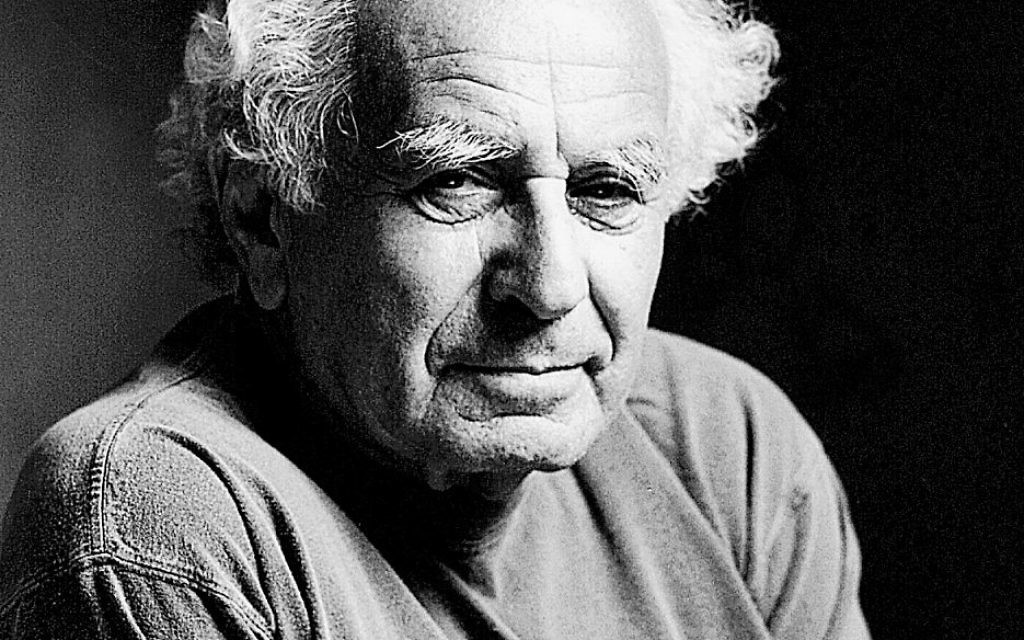The Jewish People Must Be Indivisible
Perhaps, with good will, we can re-establish our commitment to klal Yisrael and become again governed by the ideal of one united and indivisible people.
I believe the following event took place on Shabbat HaGadol, the Shabbat before Pesach, when Rabbi Chaim Eleazar Shapiro, the Munkacser rebbe, honored us, members of the Beth HaMidrash HaGadol (the House of the Great Study), by being the chazzan and conducting the service.
While he stood in front of the three-tiered Holy Ark, wherein hundreds of Torahs rested, and led the morning service, two Hasidic disciples clad in fur hats and silk caftans began throwing rotten eggs at the rabbi.
The congregation was stunned. The two men were disciples of a competing rebbe, the Szatmarer rebbe, from the nearby city of Szatmar in Romania. The remnants of the eggs were washed from the wall the next day, but the stain remained — a stain I henceforth called the “stain of shame.”
Get The AJT Newsletter by email and never miss our top stories Free Sign Up
This shameful act reflected sinath chinom, a baseless hatred. The sages considered such hatred, associated with vanity, to be so grievous a sin that they blamed the destruction of the Second Temple and Jerusalem on such hatred between Kamtza and Bar Kamtza.
The Munkacser and Szatmarer sects were hostile to each other because of competition for status and disciples, but they shared an overriding hostility toward the rising movement of Zionism, which they considered to be the destroyer of Judaism.
My uncle was the Munkacser rebbe’s physician and asked the rebbe to be the mohel at the bris of his son, my cousin. I was 9 and had all the accouterments of a proper Orthodox boy. I was proud of my curly payot (ear locks), wore my tzitzit untucked and visible, and covered my head with a proper cap, not a kippah.
The rebbe invited me to eat a piece of chicken from his plate, bestowing on me the great honor of eating sherayim (leftovers). I was the envy of most of his adult disciples.
He asked what I was studying, and I said I was about to start the study of the Mishnah. He was pleased.
But my response to his second question, about what school I attended, made him angry. When I said I was attending the Hebrew elementary school, he pulled away his plate and turned his back to me. Despite all my symbols of Orthodoxy, I was now considered by him to be a Zionist and an apikoros, a denier of Judaism.
The rebbe’s hostility focused on Zionism’s denial of the belief in the Messiah, whom the rebbe saw as the only one with the right to rebuild the nation and the Temple. But the rebbe also had a personal reason: Zionism rejected shtetl life, where Judaism could retain its old form.
From the traditional perspective, Zionism denied the principle of assey seyag laTorah, creating a fence around the Torah, tantamount to the isolation of Jews. Zionism did not believe that Jews should reject the outside world.
For example, many sages proposed that Jews merited redemption from Egyptian slavery because they kept themselves separate from the Egyptian world.
The Munkacser rebbe frequently lectured that Jewish life outside the shtetl is impossible. The continuity of Jewish existence was possible only if Jews maintained a separation between the holy and the profane world. That is why Hasidic Jews opposed exchanging Yiddish, the Jews’ secular language, for Hebrew, the holy language (lashon hakodesh).
To my dismay, the same sort of baseless hatred made its way from Europe to Israel, where it became a dominant feature of politics.
Change is a constant feature of existence. One of the consequences of change is the dominance of heterogeneity, especially in religious beliefs. Judaism will never be a single belief system.
So if Israel insists on rejecting religious heterogeneity and maintaining an atmosphere of hostility, can it survive as a nation? How can Israel seek peace with its neighbors when it cannot eliminate intra-Jewish hostility?
When I was liberated from the Holocaust, I sought answers to the question I directed to my father after I received a beating on my first day in Birkenau: How can we create a peaceful coexistence among diverse ethnic and religious groups who must live together? To my sadness, I must add a similar question: Can Judaism exist if we do not resolve intra-Jewish hostilities?
Do we no longer believe in klal Yisrael, the unity of the Jewish people?
There is no room within Judaism for the hostility that exists between Orthodox, especially Hasidic, and non-Orthodox Jews. Isn’t it time for us to reject the unproductive squabble and teach the unity that is one of the Torah’s dominant moral ideals?
On 36 occasions the Torah teaches us about the need of peaceful coexistence with the stranger. How much more should this principle govern coexistence among ourselves?
My brother Benjamin (z”l) was killed in Birkenau. In the last two years before the Holocaust, as he entered his teen years, we squabbled as brothers often do. To keep peace in the home, my mother interfered, telling me, “Tuli, you are the oldest. You are smart. Give in a little to your brother.”
My mother came from a small village and had a sixth-grade education, but she knew how to keep the peace — through accommodation. You give a little, and I give a little, and there will be peace.
The Catholic Church seemed to understand this principle, which led to the adoption of the principle of ecumenism at the Second Vatican Council. Perhaps we can borrow from the church and bring equity and peace among the variant forms of Judaism. Perhaps, with good will, we can re-establish our commitment to klal Yisrael and become again governed by the ideal of one united and indivisible people.





comments